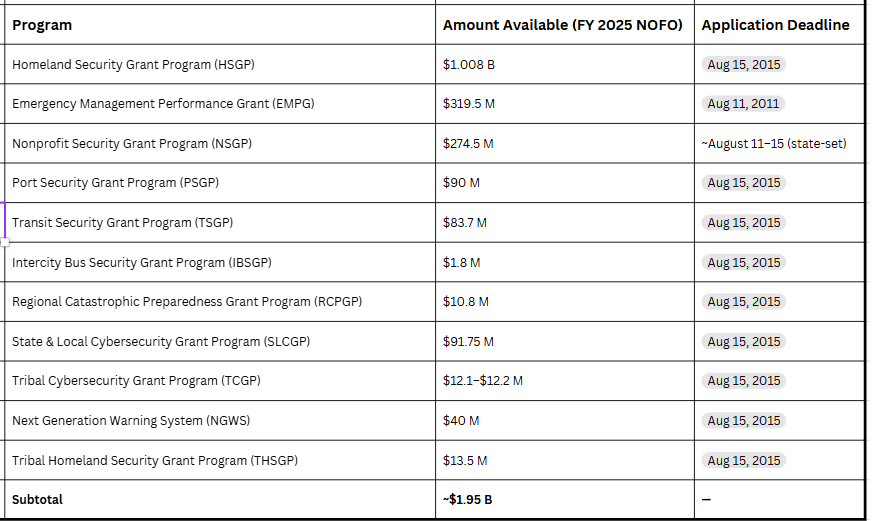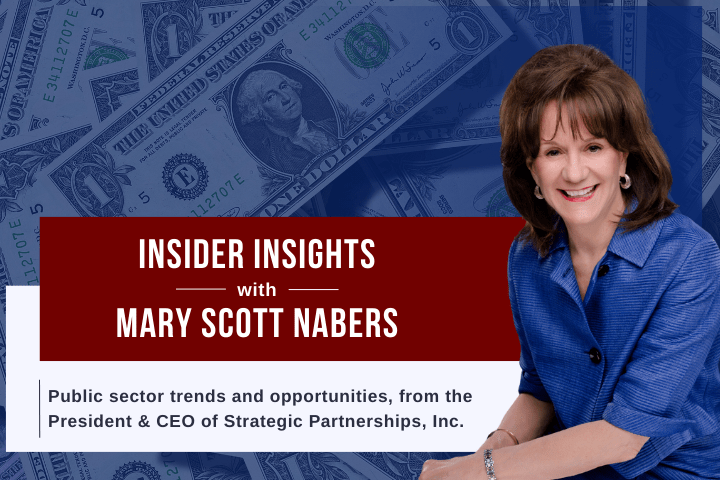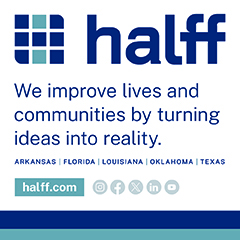If you blinked, took a short summer vacation or shifted your focus to another task, you may have missed the announcement that approximately $2 billion in federal funding was just made available. Here’s hoping you didn’t miss the initial announcement because the application timeline is so short it is shocking!
Between July 28 and Aug. 7, a substantial amount of grant funding was announced through Notices of Funding Opportunity (NOFO) from 15 FEMA-administered federal grant programs. Not only was it unusual to announce funding from so many programs all at one time, but it was also highly uncommon to provide timelines for grant proposals that lasted only two to three weeks. Most of the recently announced NOFO deadlines close by August 15 or 16.
We are vigilant as we work daily to cover not only NOFOs, but all other such news, but we almost missed this. We share this data today grumbling a bit internally because it was less than transparent and also because we want to remind ourselves and our readers that we are experiencing historic changes from the U.S. government.
Compressed timelines like this are not the norm. In the 2024 budget year, similar programs had more than two months for submissions and NOFOs were announced much earlier. The cumulative amount available through these 15 grant NOFOs is approximately $1.95 billion. Data on how many applications have been received is not yet available, but it seems obvious that many fewer funding requests will be received.
The late NOFO publications and the very short timelines for proposal applications may be linked to a mandated requirement that NOFOS must be made and funding allocations made before the end of fiscal year (FY) 2025 which occurs on Sept. 30, 2025. It’s also possible that the objective was to limit the number of funding requests.
These federal funding programs are congressionally authorized. On the outside chance that some readers want to see the NOFO amounts and deadlines to apply for funding, this chart lays it all out.

In FY 2024, the same programs totaled roughly $2.28 billion in available funding. The biggest single decrease is in the State & Local Cybersecurity Grant Program (SLCGP), which dropped from $279.9 million in FY 2024 to $91.75 million in FY 2025 — a difference of about $188 million. Other program amounts stayed roughly flat year-over-year, although NSGP had additional supplemental funding in FY 2024 and that is not reflected in the FY 2025 data.
The other big change was that in 2024, the application periods for these programs typically allowed approximately two months or more; in 2025, those timelines dropped to between two and three weeks.
This analysis is just one more example of significant changes that are occurring at the federal levels of government. From this vantage point it appears that vigilant monitoring may be required to capture any federal funding opportunity or initiative. That is not always possible but for decades state and local governmental entities have depended on this type of grant funding to support many critical priorities for state and local governmental needs.
The Strategic Partnerships Team (SPI) monitors federal activities through the efforts of the research team as well as through the Government Market News Team and many consulting partners throughout the U.S. All three groups also monitor activities at the state and local levels of government in all states. Lately, however, that task has started to resemble a never-ending race.
Because so many of the SPI team members came from the ranks of government, we prioritize this tracking, which can be vital to not only public officials who manage the nation’s government marketplace but companies that transact business and participate within the government marketplace.
So, in these changing times, we will move quicker, run faster, and report sooner as we continue to cover the waterfront to keep subscribers, clients, and public official friends well informed. We are always open to input, requests, and/or suggestions. Let us hear from you if you think we are missing anything you want to know.
Photo by Pixabay













